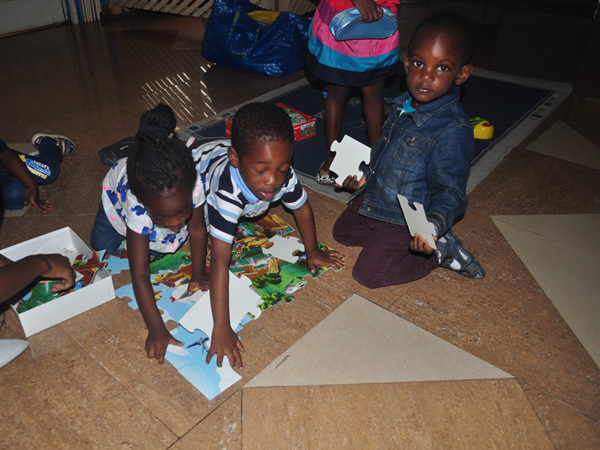A toy library is not just a place but a special opportunity for children to expand and explore their imaginations and dreams with playthings and objects. They can manipulate toys, puzzles, and games that aid in emotional development, stimulating brain growth and promoting social skills.
This resource is from “Play Therapy: The Art of the Relationship” written by GarryL. Landreth.
Benefits of a Toy Library
Toys offer children the opportunity to stimulate the three domains of learning which include the cognitive domain (reasoning), the affective domain (emotion), and the psychomotor domain(physical). According to a recent study in Developmental Psychology, puzzles provide the medium to help enhance children’s memory via the size and shape of the pieces, and strengthen their problem solving skill through active performance as well as verbal communication. Board games, likewise, encourage the ability to improve critical thinking. The toy library plays an integral role in the interaction between you and your child. Parents quite often disregard the benefit of playing games with their children getting involved in playtime activities. A bond is usually formed through interactive activities, it is through this platform that you will have the opportunity to help your child to develop such strong qualities. The purpose of the toy library is not only focused on the development of children but to allow you, parents, to understand the importance of toys and play. Playing games are vital to the early stages of childhood, therefore, such venue will serve as model to display the importance of toys as being stimulating elements of play.
The Meaning of Play
Having read a couple of books and articles, I came across “Play Therapy: The Art of the Relationship” written by Garry L. Landreth, in which he discusses the importance of play a natural medium of self expression. He goes in great detail explaining the therapeutic relationships children form through simple interactions with toys.
“Children’s play is not mere sport. It is full of meaning and import. Children must be approached and understood from a developmental perspective. They are miniature adults. Their world is one of concrete realities, and their experiences often are communicated through play. In seeking to facilitate children’s expression and exploration of their emotional world, therapists must turn loose of their world of reality and verbal expression and move into the conceptual expressive world of children. Unlike adults, whose natural medium of communication is verbalization, the natural medium of communication is play and activity.

A therapeutic working relationship with children is best established through play, and the relationship is crucial to the activity we refer to as therapy. Play provides a means through which conflicts can be resolved and feelings can be communicated. ‘The toys implement the process because they are definitely the child’s medium of expression….His free play is an expression of what he wants to do… When he plays freely and without direction, he is expressing a period of independent thought and action.”
Playing with your Child
Here are some tips you can follow as a parent:
- Give your child time to play everyday either at home or outdoors.
- Get involved! Play with your child!
- Follow up with your child’s development. As your child get older he/she will develop new skills and the toys he/she uses will adjust over time.
- Communicate with your child! Let him/her tell you how he/she is feeling.
Parents Positive Parenting Tips!
- Remember kids are kids, so take it easy!
- Approach your child with thoughtfulness: teach, don’t scold
- Try to understand your child, approach him/her and let him/her know that you are there at all times. Your child is your priority!
- Parenting is a challenge, but be aware that in the process you will learn how to become a better parent.
- Teaching your child responsibilities will take time. Pay attention to his/her growth.
- From ages 0-2, children tend explore their surroundings.
- From ages 3- 5, children begin to understand and stimulate their intellectual, physical, social, and emotional development.
- From ages 6- 9, children begin to think critically and question the reason behind certain actions.
- From ages 10-14, children move from concrete thinking to abstract thinking. This is the time when kids get mostly distracted and must be encouraged to study.
- From ages 15-18, an expansion in their reasoning abilities and rebel spirit is quite often seen at this point.